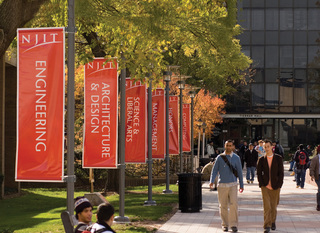Document Type
Thesis
Date of Award
12-31-1990
Degree Name
Master of Science in Electrical Engineering - (M.S.)
Department
Electrical and Computer Engineering
First Advisor
Ken K. Chin
Second Advisor
William N. Carr
Third Advisor
Durgamadhab Misra
Fourth Advisor
Robert Boris Marcus
Abstract
Field Emission of an emitter covered with a very thin oxide layer is modeled and calculated numerically. The additional barrier due to the oxide layer is included in the tunnelling problem by using the standard WKB method and tunnelling transmission matrix method. The following physical parameters are considered: the oxide barrier height, the oxide conduction band edge electron effective mass, and the oxide dielectric constant. Compared with the Fowler-Nordheim equation, which was derived for a clean metallic emitter, the calculation of this work shows a reduction of the emission current density from an emitter covered with an oxide layer a few monolayer thick. Strikingly, after reaching a minimum emission current density, the emission increases when the thickness of the oxide layer increases further. Finally, the emission current density is saturated and stabilized. The calculation shows that, for both semiconductor emitter and metallic emitter, the trends of emission current density varying with the thickness of oxide layer are the same. The temperature and field intensity dependences of the emission are also considered. The calculation shows that the emission current density depends weekly on the temperature, but strongly depends on the applied field. The main results of the thesis has been presented at Third International Conference of Vacuum Microelectronics, Monterely, California in July, 1990, and has been submitted to the IEEE Transaction on Electeon Devices for publication.
Recommended Citation
Yang, Guang, "Electron field emission through a very thin oxide layer" (1990). Theses. 2998.
https://digitalcommons.njit.edu/theses/2998




